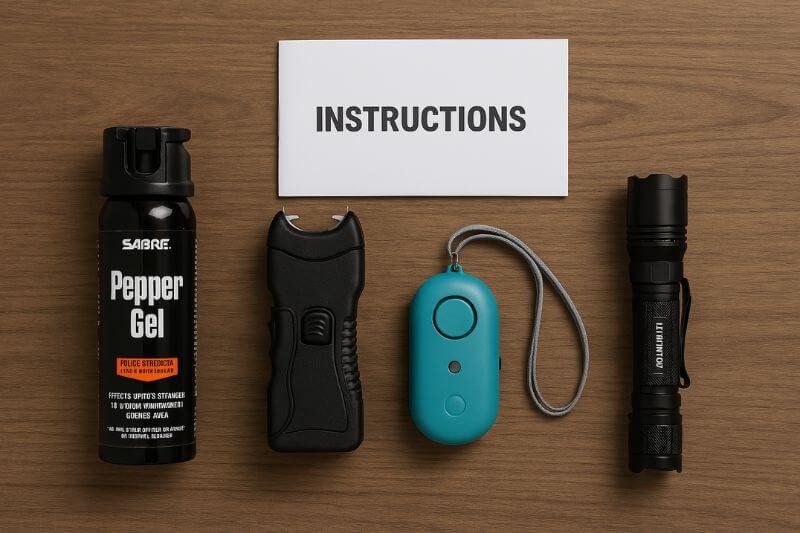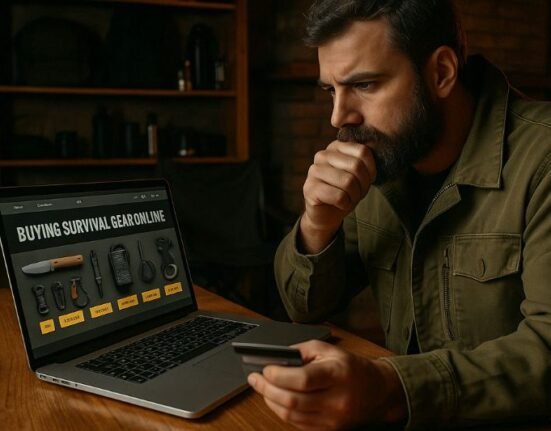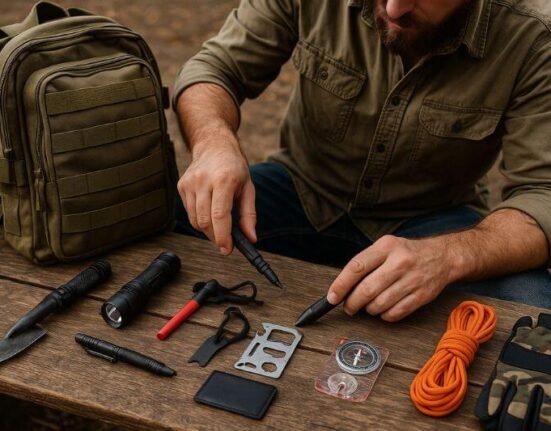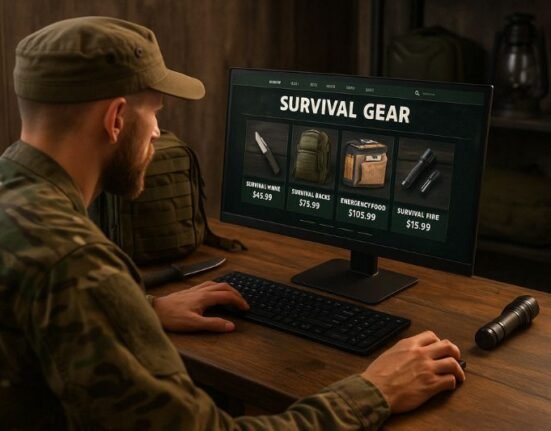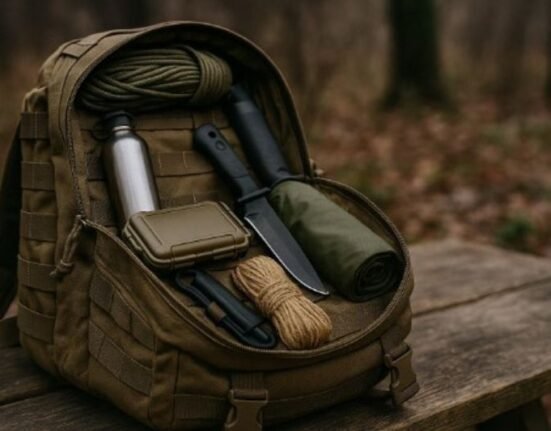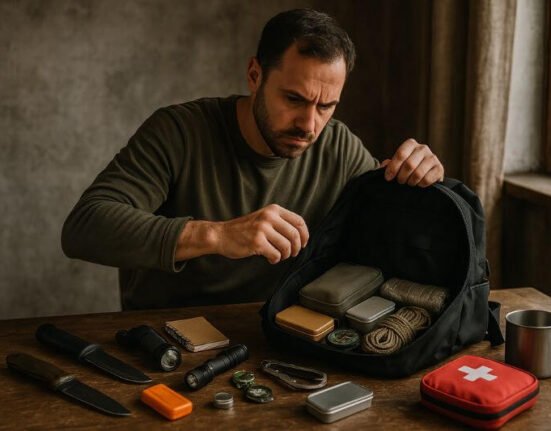Self-defense weapons are becoming increasingly popular in 2025—not just as a backup, but as a deliberate first line of protection. With growing concerns over legal liability, children in the home, and the ethical burden of lethal force, many people are choosing to secure their homes with non-lethal solutions that still work.
This guide explores realistic, effective, and affordable self-defense weapons that you can use to protect your household—without pulling a trigger.
🧠 PART 1: WHY NON-LETHAL DEFENSE IS A SMART CHOICE IN 2025
1. When Firearms Aren’t an Option—or the Right Fit
Not every home is suited for guns. Some states make ownership difficult. Others live in close quarters where a stray round could hurt a neighbor—or a child. Many people simply aren’t comfortable with lethal force.
🔎 Common reasons people prefer non-lethal weapons:
- Children or vulnerable adults in the home
- Legal restrictions on firearm ownership
- Risk of overpenetration in apartments
- Ethical stance or religious beliefs
- Lack of time or access for proper firearm training
“A non-lethal weapon is still a serious weapon—because its purpose is to stop a threat.”
— Urban Survival Handbook, CivilFall Edition 2025
2. Core Principles of Effective Self-Defense Weapons
A good self-defense weapon—lethal or not—must check certain boxes. It’s not about intimidation. It’s about results.
✅ The 4 Rules of a Non-Lethal Home Defense Weapon:
- Accessible: Reachable in seconds, not minutes
- Controllable: Usable under stress and in confined spaces
- Effective: Capable of stopping or disorienting an attacker
- Safe for the user: Low risk of self-harm or misuse
💡 Pro Tip: Practice is still required. Even non-lethal tools need muscle memory and understanding.
3. Overview: Common Non-Lethal Weapons for Home Use
Here’s a comparison of the most popular non-lethal self-defense weapons available in 2025:
| Weapon Type | Strengths | Limitations |
|---|---|---|
| Pepper Spray (Gel) | Fast, low-cost, stops attackers at distance | Can contaminate indoor air if used poorly |
| Stun Gun / Taser | High stopping power, loud deterrent sound | Requires close contact (risk of struggle) |
| Expandable Baton | Impact weapon, compact, reusable | Requires skill and strength to use safely |
| Personal Alarm | Draws attention, disorients attacker | No physical stopping power |
| Flashlight (Blinding) | Legal everywhere, blinding at close range | Doesn’t disable threat—only disorients |
📌 Combo Strategy: Many preppers pair a tactical flashlight with pepper gel—blind, then spray.
🛠️ PART 2: CHOOSING THE RIGHT NON-LETHAL WEAPON FOR YOUR HOUSEHOLD
4. Match the Weapon to Your Home and Who Lives In It
Not every self-defense weapon works for every household. The layout of your home, who lives there, and your physical ability all play a role.
Let’s explore realistic pairings based on different needs:
🏘️ For Families With Children
- ✅ Pepper gel: Safer than spray (no airborne mist)
- ✅ Motion-activated floodlights: Deters before entry
- ✅ Tactical flashlight + alarm combo: Wakes the house and disorients
📌 Avoid: Stun guns or batons—high misuse risk around kids
👩 For Women Living Alone
- ✅ Personal alarm (130+ dB) by the bed
- ✅ Stun gun with disable pin (disconnects if taken)
- ✅ Door stop alarm: Blocks entry and alerts instantly
📌 Pro Tip: Practice in low light with gloves—stress changes everything
👴 For Seniors or Limited Mobility
- ✅ Pepper gel with wall mount near doors/windows
- ✅ Loud alarm device with remote activation
- ✅ Cane or walking-stick baton (doubles as a mobility aid)
📌 Best Practice: Place tools at seated height—not high shelves
5. Where to Store Non-Lethal Weapons for Fast Use
Like firearms, self-defense weapons are useless if they’re inaccessible when it counts. But unlike guns, these tools offer more freedom in placement.
🔐 Suggested Placement by Room:
| Location | Recommended Weapon | Notes |
|---|---|---|
| Front/back door | Pepper gel, flashlight, doorstop alarm | Near reach but not visible from outside |
| Bedroom | Personal alarm, stun gun, flashlight | Store on nightstand or inside drawer |
| Living room | Baton or spray hidden in end table | Avoid open display |
| Garage/backyard | Motion light, spray by access points | Mount out of reach of kids |
📌 Tip: Use labeled Velcro straps or magnetic mounts for fast grabs.
6. Combining Layers for Maximum Non-Lethal Protection
The key to smart non-lethal defense isn’t the tool—it’s how many layers you stack before someone reaches your safe space.
🔒 Example Non-Lethal Layered Setup:
- Motion light triggers outside
- Barking dog sound device by entry
- Strobe flashlight when door opens
- Pepper gel or baton if breached
- Panic alarm to alert household or neighbors
“Home defense isn’t just about the weapon—it’s about time, noise, and options.”
— CivilFall Non-Lethal Defense Protocols, 2025
💵 PART 3: COST, SETUP, AND COMPLETE PREPAREDNESS
7. Non-Lethal Defense by Budget: What to Expect
One of the biggest advantages of self-defense weapons is cost. You can build a solid system for under $100—or scale up depending on risk level and home size.
💸 Entry-Level Setup ($50–$100)
- Pepper gel canister ($15–$25)
- Personal alarm (130 dB+) ($10–$20)
- Tactical flashlight ($20–$30)
- Doorstop alarm or window chime ($10–$15)
✅ Ideal for: Apartments, renters, students, limited budget
💵 Mid-Range Setup ($100–$300)
- High-powered stun gun ($40–$60)
- Motion-activated outdoor lights ($30–$50)
- 2–3 pepper gels for key rooms
- Flashlight/alarm combos
- Wall mounts or quick-access holders
✅ Ideal for: Small family homes or urban living
💰 Full Setup ($400+)
- Multiple weapons (stun + gel + baton)
- Smart lighting with solar backup
- Barking dog sound system or decoy deterrents
- Redundant alarms at every major entry
- Training gear for drills
✅ Ideal for: Suburban homes, off-grid cabins, elderly households with caregivers
8. Final Non-Lethal Defense Checklist
Before you call your setup complete, make sure these boxes are checked:
✅ Non-Lethal Defense Essentials
- 🔲 At least one fast-access deterrent in every key room
- 🔲 Motion lighting installed at exterior points
- 🔲 No tools stored above eye-level or in locked closets
- 🔲 Every adult knows how to use each item
- 🔲 Practice performed at night and in low-light
- 🔲 Tools tested and recharged/replaced monthly
💡 Replace expired pepper products every 12–18 months. Check batteries monthly.
🔚 CONCLUSION: PROTECTION WITHOUT LETHALITY IS POSSIBLE
Non-lethal self-defense weapons give everyday people the power to protect what matters—without the weight of lethal force. Whether it’s a tactical flashlight, a can of pepper gel, or a simple alarm, you’re not powerless. You’re prepared.
In a world where law enforcement may be minutes—or hours—away, your first response matters. With training, planning, and the right tools in the right place, you can defend your home safely, affordably, and legally.
🎯 Next step: Walk through your home, list your weak points, and start placing your defensive layers today. Every second you gain = more safety for your loved ones.
❓ FAQ – Self-Defense Weapons at Home
Q: Are non-lethal weapons legal everywhere?
A: In most U.S. states, yes—non-lethal self-defense weapons are legal, especially for home protection. However, local laws may impose restrictions on specific types of weapons:
- Stun guns and Tasers may require permits in some states (e.g., Hawaii, Rhode Island, parts of Illinois)
- Pepper spray is generally allowed, but some states limit canister size, strength (OC percentage), or user age
- Batons or impact weapons are restricted in certain cities or classified as “deadly weapons” if misused
📌 Always check with your state or municipal code to ensure compliance before purchasing or carrying any defensive tool.
Q: Can I carry these outside the house?
A: Some self-defense tools—like pepper spray, personal alarms, and tactical flashlights—are legal to carry in public in most places. Others, such as stun guns or batons, may face carry restrictions, even if allowed at home.
⚠️ Key rules to follow:
- Carry concealed only if allowed
- Avoid bringing items into schools, airports, or government buildings
- Follow age limits (e.g., 18+ for pepper spray in many jurisdictions)
💡 Pro Tip: Keep your tool in a readily accessible but discreet location (e.g., keychain alarm, pocket clip) and be prepared to justify it as self-defense.
Q: What’s safer—spray or gel?
A: Pepper gel is widely considered safer for indoor use. Unlike traditional pepper spray, which creates a fine airborne mist, gel:
- Adheres directly to the target
- Has reduced risk of blowback or contamination
- Offers longer range and accuracy
- Is less likely to affect children or pets nearby
📌 Many modern pepper gel products are designed specifically for home defense, and come with UV dye to mark assailants for later identification.
Q: Should I warn an intruder first?
A: If the situation allows, giving a clear verbal warning can sometimes defuse the encounter—especially with non-lethal tools.
“Get out of my house! I have pepper spray!” can stop an uncommitted intruder in their tracks.
However:
- If danger is immediate, act fast and decisively
- Use force appropriate to the threat
- Avoid hesitation if your safety or your family’s safety is in jeopardy
🛑 Remember: The goal is to stop the threat, not to punish. Once the threat ends, so should your response.









